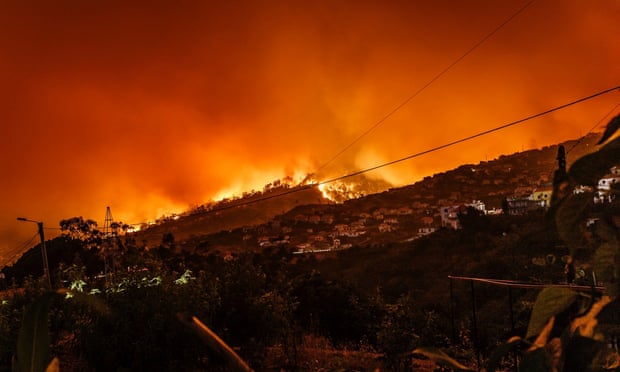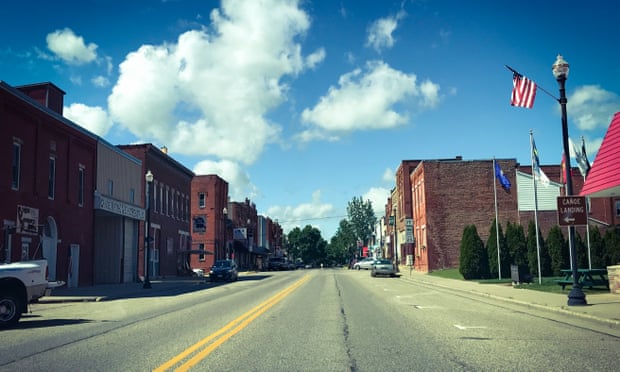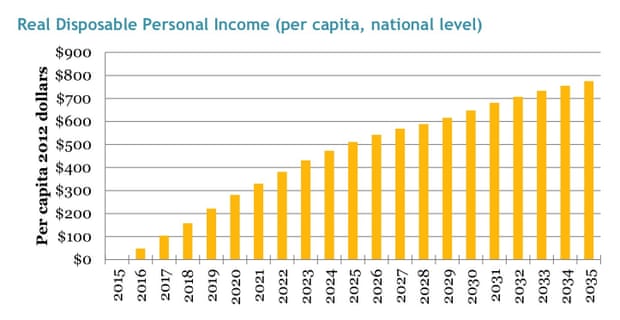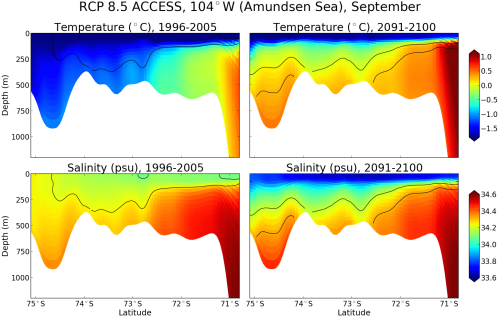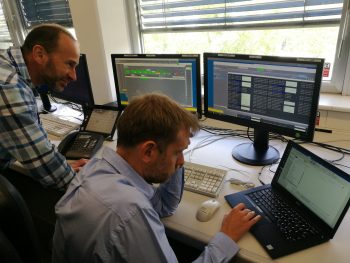A selection of new climate related research articles is shown below.
Climate change impacts
Mankind
Synthesis and Review: an inter-method comparison of climate change impacts on agriculture (open access)
Future warming increases probability of globally synchronized maize production shocks
The effects of tactical message inserts on risk communication with fish farmers in Northern Thailand
Spatial assessment of maize physical drought vulnerability in sub-Saharan Africa: Linking drought exposure with crop failure (open access)
Rescaling drought mitigation in rural Sri Lanka
A stakeholder-based assessment of barriers to climate change adaptation in a water-scarce basin in Spain (open access)
Biosphere
Population-specific responses in physiological rates of Emiliania huxleyi to a broad CO2 range (open access)
Shifts in phenological distributions reshape interaction potential in natural communities
Warming and oligotrophication cause shifts in freshwater phytoplankton communities
Biogeophysical controls on soil-atmosphere thermal differences: implications on warming Arctic ecosystems (open access)
Climate change increases ecogeographic isolation between closely related plants
Spatial relationship between climatic diversity and biodiversity conservation value
Rapid thermal adaptation in a marine diatom reveals constraints and tradeoffs
Traits drive global wood decomposition rates more than climate
Limited prospects for future alpine treeline advance in the Canadian Rocky Mountains
Temperature change along elevation and its effect on the Alpine timberline tree growth in the southeast of the Tibetan Plateau (open access)
A Meta‐Analysis of Temperature Sensitivity as a Microbial Trait
Forest drought resistance distinguished by canopy height (open access)
Climate change mitigation
Climate change communication
The climate change dilemma: big science, the globalizing of climate and the loss of the human scale
Emission savings
Chinese Provinces' CO2 Emissions Embodied in Imports and Exports (open access)
China's energy consumption in the new normal (open access)
Policies to enhance the drivers of green housing development in China
Energy production
Low carbon scenarios and policies for the power sector in Botswana
Climate Policy
Carbon pricing and deep decarbonisation (open access)
Geoengineering
Increasing Arctic Sea Ice Albedo Using Localized Reversible Geoengineering (open access)
Climate change
On the Relative Robustness of the Climate Response to High‐Latitude and Low‐Latitude Warming (open access)
Towards a European Climate Prediction System
Temperature, precipitation, wind
Strengthened Indonesian Throughflow Drives Decadal Warming in the Southern Indian Ocean
Comparison of missing value estimation techniques in rainfall data of Bangladesh
Projected timing of perceivable changes in climate extremes for terrestrial and marine ecosystems
Changes of heating and cooling degree days over China in response to global warming of 1.5°C, 2°C, 3°C and 4°C (open access)
Ultralow Surface Temperatures in East Antarctica From Satellite Thermal Infrared Mapping: The Coldest Places on Earth (open access)
Rain-on-snow events in Alaska, their frequency and distribution from satellite observations (open access)
Extreme events
Changes of Tropical Cyclone Tracks in the Western North Pacific over the past 38 years (open access)
The Dark Side of Hurricane Matthew: Unique Perspectives from the VIIRS Day/Night Band (open access)
Projection of drought hazards in China during twenty-first century
Changes in record-breaking temperature events in China and projections for the future
Additional Intensification of Seasonal Heat and Flooding Extreme over China in a 2°C Warmer World Compared to 1.5°C (open access)
Future changes in precipitation extremes over China projected by a regional climate model ensemble
How uneven are changes to impact‐relevant climate hazards in a 1.5°C world and beyond?
Forcings and feedbacks
Sunlight, clouds, sea ice, albedo, and the radiative budget: the umbrella versus the blanket (open access)
Lakes on the Tibetan Plateau as conduits of greenhouse gases to the atmosphere
Cryosphere
Regional trends in weather systems help explain Antarctic sea ice trends
Observations and modelling of algal growth on a snowpack in north-western Greenland (open access)
Greenland Ice Sheet – Higher non‐linearity of ice flow significantly reduces estimated basal motion
Autonomous ice sheet surface mass balance measurements from cosmic rays (open access)
Anthropogenic Warming Impacts on Today's Sierra Nevada Snowpack and Flood Risk
Anomalous glacier changes in the southeast of Tuomuer‐Khan Tengri Mountain Ranges, Central Tianshan
Changing river ice seasonality and impacts on interior Alaskan communities
Hydrosphere
Adding new evidence to the attribution puzzle of the recent water shortage over São Paulo (Brazil)
Interdecadal sea level variations in the Pacific: Distinctions between the tropics and extratropics
Atmospheric and oceanic circulation
The Influence of Arctic Amplification on Mid-latitude Weather and Climate
Carbon cycle
A Biogeochemical Compromise: The High Methane Cost of Sequestering Carbon in Restored Wetlands
Carbon stocks, sequestration, and emissions of wetlands in south eastern Australia
Utilizing the Drake Passage Time-series to understand variability and change in subpolar Southern Ocean pCO2 (open access)
Carbon emissions from Southeast Asian peatlands will increase despite emission‐reduction schemes
Temperature response of respiration across the heterogeneous landscape of the Alaskan Arctic tundra
Enhanced response of global wetland methane emissions to the 2015–2016 El Niño-Southern Oscillation event (open access)
Soil moisture stress as a major driver of carbon cycle uncertainty
Other papers
Palaeoclimatology
The effect of obliquity‐driven changes on paleoclimate sensitivity during the late Pleistocene
Increasing Temperature Sensitivity caused by Climate Warming, Evidence from Northeastern China
Candidate sites of 1.5 Myr old ice 37 km southwest of the Dome C summit, East Antarctica (open access)
from Skeptical Science https://ift.tt/2m0qsLw
A selection of new climate related research articles is shown below.
Climate change impacts
Mankind
Synthesis and Review: an inter-method comparison of climate change impacts on agriculture (open access)
Future warming increases probability of globally synchronized maize production shocks
The effects of tactical message inserts on risk communication with fish farmers in Northern Thailand
Spatial assessment of maize physical drought vulnerability in sub-Saharan Africa: Linking drought exposure with crop failure (open access)
Rescaling drought mitigation in rural Sri Lanka
A stakeholder-based assessment of barriers to climate change adaptation in a water-scarce basin in Spain (open access)
Biosphere
Population-specific responses in physiological rates of Emiliania huxleyi to a broad CO2 range (open access)
Shifts in phenological distributions reshape interaction potential in natural communities
Warming and oligotrophication cause shifts in freshwater phytoplankton communities
Biogeophysical controls on soil-atmosphere thermal differences: implications on warming Arctic ecosystems (open access)
Climate change increases ecogeographic isolation between closely related plants
Spatial relationship between climatic diversity and biodiversity conservation value
Rapid thermal adaptation in a marine diatom reveals constraints and tradeoffs
Traits drive global wood decomposition rates more than climate
Limited prospects for future alpine treeline advance in the Canadian Rocky Mountains
Temperature change along elevation and its effect on the Alpine timberline tree growth in the southeast of the Tibetan Plateau (open access)
A Meta‐Analysis of Temperature Sensitivity as a Microbial Trait
Forest drought resistance distinguished by canopy height (open access)
Climate change mitigation
Climate change communication
The climate change dilemma: big science, the globalizing of climate and the loss of the human scale
Emission savings
Chinese Provinces' CO2 Emissions Embodied in Imports and Exports (open access)
China's energy consumption in the new normal (open access)
Policies to enhance the drivers of green housing development in China
Energy production
Low carbon scenarios and policies for the power sector in Botswana
Climate Policy
Carbon pricing and deep decarbonisation (open access)
Geoengineering
Increasing Arctic Sea Ice Albedo Using Localized Reversible Geoengineering (open access)
Climate change
On the Relative Robustness of the Climate Response to High‐Latitude and Low‐Latitude Warming (open access)
Towards a European Climate Prediction System
Temperature, precipitation, wind
Strengthened Indonesian Throughflow Drives Decadal Warming in the Southern Indian Ocean
Comparison of missing value estimation techniques in rainfall data of Bangladesh
Projected timing of perceivable changes in climate extremes for terrestrial and marine ecosystems
Changes of heating and cooling degree days over China in response to global warming of 1.5°C, 2°C, 3°C and 4°C (open access)
Ultralow Surface Temperatures in East Antarctica From Satellite Thermal Infrared Mapping: The Coldest Places on Earth (open access)
Rain-on-snow events in Alaska, their frequency and distribution from satellite observations (open access)
Extreme events
Changes of Tropical Cyclone Tracks in the Western North Pacific over the past 38 years (open access)
The Dark Side of Hurricane Matthew: Unique Perspectives from the VIIRS Day/Night Band (open access)
Projection of drought hazards in China during twenty-first century
Changes in record-breaking temperature events in China and projections for the future
Additional Intensification of Seasonal Heat and Flooding Extreme over China in a 2°C Warmer World Compared to 1.5°C (open access)
Future changes in precipitation extremes over China projected by a regional climate model ensemble
How uneven are changes to impact‐relevant climate hazards in a 1.5°C world and beyond?
Forcings and feedbacks
Sunlight, clouds, sea ice, albedo, and the radiative budget: the umbrella versus the blanket (open access)
Lakes on the Tibetan Plateau as conduits of greenhouse gases to the atmosphere
Cryosphere
Regional trends in weather systems help explain Antarctic sea ice trends
Observations and modelling of algal growth on a snowpack in north-western Greenland (open access)
Greenland Ice Sheet – Higher non‐linearity of ice flow significantly reduces estimated basal motion
Autonomous ice sheet surface mass balance measurements from cosmic rays (open access)
Anthropogenic Warming Impacts on Today's Sierra Nevada Snowpack and Flood Risk
Anomalous glacier changes in the southeast of Tuomuer‐Khan Tengri Mountain Ranges, Central Tianshan
Changing river ice seasonality and impacts on interior Alaskan communities
Hydrosphere
Adding new evidence to the attribution puzzle of the recent water shortage over São Paulo (Brazil)
Interdecadal sea level variations in the Pacific: Distinctions between the tropics and extratropics
Atmospheric and oceanic circulation
The Influence of Arctic Amplification on Mid-latitude Weather and Climate
Carbon cycle
A Biogeochemical Compromise: The High Methane Cost of Sequestering Carbon in Restored Wetlands
Carbon stocks, sequestration, and emissions of wetlands in south eastern Australia
Utilizing the Drake Passage Time-series to understand variability and change in subpolar Southern Ocean pCO2 (open access)
Carbon emissions from Southeast Asian peatlands will increase despite emission‐reduction schemes
Temperature response of respiration across the heterogeneous landscape of the Alaskan Arctic tundra
Enhanced response of global wetland methane emissions to the 2015–2016 El Niño-Southern Oscillation event (open access)
Soil moisture stress as a major driver of carbon cycle uncertainty
Other papers
Palaeoclimatology
The effect of obliquity‐driven changes on paleoclimate sensitivity during the late Pleistocene
Increasing Temperature Sensitivity caused by Climate Warming, Evidence from Northeastern China
Candidate sites of 1.5 Myr old ice 37 km southwest of the Dome C summit, East Antarctica (open access)
from Skeptical Science https://ift.tt/2m0qsLw


